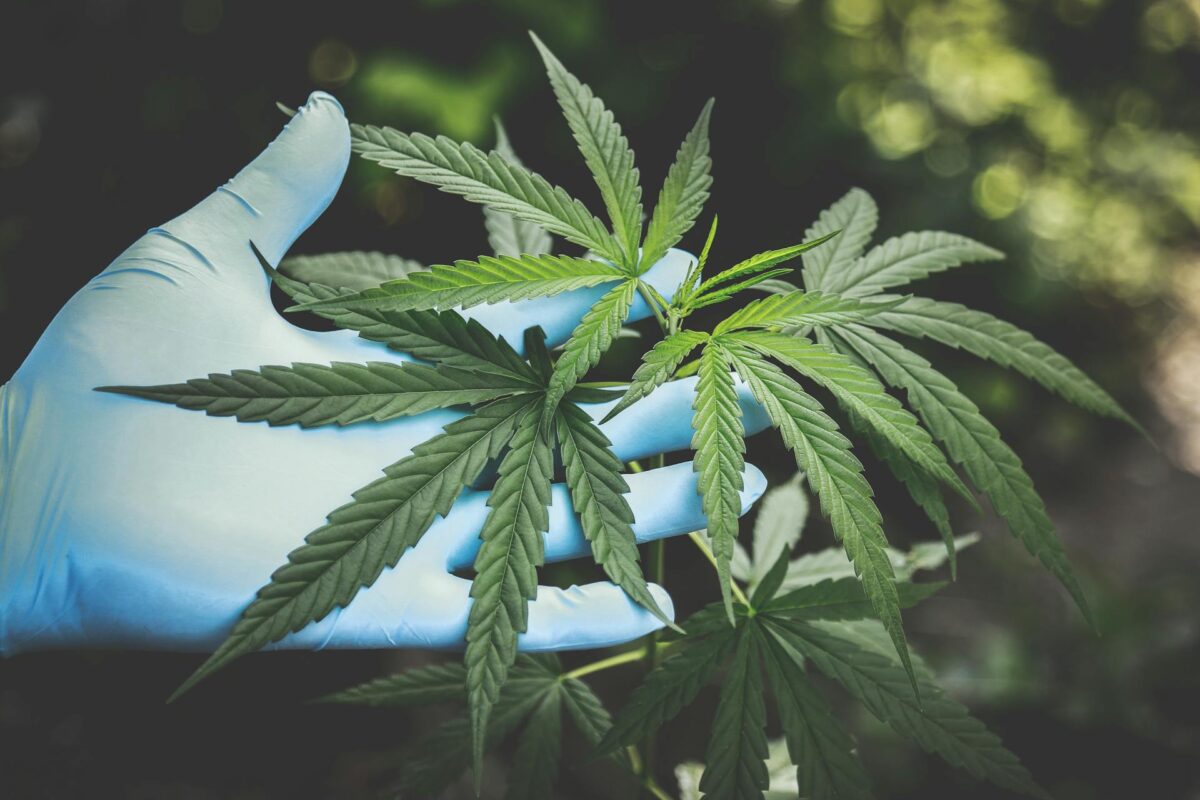Spasticity: Causes, Symptoms and How Medical Cannabis Can Help

Spasticity is a condition that affects 500,000 patients in the US and over 12 million people worldwide. It’s common in patients with other neurological comorbidities such as Multiple Sclerosis (MS), Cerebral Palsy (CP), Stroke, Spinal Cord Injury (SCI) and Traumatic Brain Injury (TBI). The data supports that affirmation: 84% of MS patients and 62% of SCI patients experience some degree of spasticity; this condition is also prevalent among stroke survivors as 38% of individuals experience spasticity after a stroke within the first year of occurrence of the event. When looking at the prevalence of spasticity in cerebral palsy patients the numbers are equally striking since an estimated 80% of CP patients suffer from spasticity as well.
What is spasticity? What are spasticity causes, symptoms and treatment options? How can medical cannabis help treat this condition? Is medical cannabis available for spasticity patients in Texas?
What is Spasticity?
Spasticity is a condition that results from damage to the part of the central nervous system (brain, spinal cord) in charge of managing muscle movements and stretching reflexes. It manifests as increased muscle tone due to prolonged muscle contraction which creates stiffness and can make normal movement, speech or walking difficult. Spasticity can present in diverse degrees of intensity so it should be treated on a case-by-case basis, but often it is significant enough to cause pain in patients affected by this condition, often to the point where it interferes with daily living activities.
Although it can affect any muscles or joints in the body, it is much more common around the legs. For example when looking at the presentation of spasticity in MS patients, extensor spasticity can make muscles so tight that the limbs remain straight and are difficult to bend, whereas in flexor spasticity the contrary is true: the muscles are so tight that the limbs are bent and it is very difficult (and painful) to straighten them.
Spasticity Causes
Spasticity doesn’t occur by itself, it’s connected to the occurrence of other illnesses affecting the central nervous system. It is often the result of neurological conditions such as MS, cerebral palsy, stroke, traumatic brain injury, spinal cord injury, ALS, ALD, phenylketonuria or Krabbe disease.
More specifically, spasticity is caused by damage in the central nervous system (CNS) that results in an imbalance of the signals that are sent from the CNS to the muscles in the body, creating issues with muscle movement and strength. Often, the messages related to flexing the muscles or decreasing muscle tone that travel from the brain to the spinal cord don’t reach their destination correctly due to damage in the brain and only the messages of tightening of the muscles which are transmitted from the spinal cord to the muscles flow regularly, causing an imbalance as the 2 different types of messages need to flow successfully for the human body to achieve smooth, coordinated movements.
What are symptoms of spasticity?
Spasticity can manifest in different ways and the symptoms vary depending on the severity of the underlying condition and the spasticity. Common symptoms are:
- Increased muscle tone.
- Involuntary movements such as involuntary crossing of the legs.
- Muscle spasms (rapid and constant involuntary muscle contractions.)
- Abnormal posture.
- Muscle, bone and/ or joint deformities.
- Pain.
- Overactive reflexes.
- Difficulty sleeping due to pain or recurring muscle spasms.
- Difficulty to function and to carry-on with daily living activities.
- Contractures (permanent contraction of the muscle and tendon due to sustained and severe stiffness and spasms.)
Treatment Options
Spasticity is not curable, but there are different options to alleviate the symptoms and improve the patient’s quality of life.
Although each case is unique, in general this condition requires a team approach when it comes to designing an integral course of treatment. Professionals in neurology, physical therapy, occupational therapy, speech and language therapy, orthopedic surgery and psychology are often involved to address the diverse challenges that this condition presents.
Non-surgical treatments entail the combination of two or more treatment options such regular therapy sessions to stretch and strengthen upper and lower body muscles and to introduce any necessary training to be able to perform daily living activities; splinting, casting and bracing with the goal to maintain flexibility and range of motion; speech therapy is essential to work not only on communication skills but also on swallowing when the condition affects the muscles in the face and throat; local Botox injections are applied into spastic muscles to cause the muscles to relax (this therapy takes a few days to become evident, can last up to 3 months and is most effective when spasticity is localized in a reduced area.)
In combination with the above therapies, doctors usually prescribe traditional medications to address pain, insomnia or to induce muscle relaxation. Unfortunately, those medications are often ineffective or cause undesirable side effects such as drowsiness, liver inflammation, muscle weakness and have the potential to cause additional complications like hematologic or hepatic damage.
Surgical treatments are usually reserved for severe cases and involve 3 different options:
- Intrathecal Baclofen Therapy (IBT): surgical placement of a pump in the patient’s abdomen that administers the medicine Baclofen through a catheter directly into the spinal fluid. The goal is to reduce spasticity and pain all while reducing the drowsiness caused when taking the medicine orally.
- Selective Dorsal Rhizotomy (SDR): a neurosurgeon carefully cuts selected damaged nerve roots that are causing imbalances in the communication of electrical signals to certain muscles and resulting in spasticity. This procedure is performed to correct muscle stiffness while preserving other motor and sensory functions specifically on the legs.
- Orthopedic surgery: this option’s goal is to address contractures and deformities derived as a consequence of spasticity on muscles, bones and connective tissue that are the source of increased pain or create significant motor challenges.
How Can Medical Marijuana Help?
Traditional medication is not always effective at providing relief for patients who suffer from spasticity, and sometimes their secondary effects are intolerable. This is why more patients are turning towards medical cannabis as an alternative treatment option.
How can medical marijuana help spasticity patients? The answer lies in cannabinoids found in the cannabis plant, and 2 in particular: THC and CBD. Although the plant contains more than a hundred cannabinoids, THC and CBD are particularly effective at interacting with the human body’s endocannabinoid system (ECS) which manages the central and peripheral nervous systems’ synaptic plasticity, neuronal synaptic communication as well as certain biological functions like growth and development, metabolism, anxiety, learning and memory or reproduction to name just a few.
When the central nervous system suffers damage, the role of the endocannabinoid system is altered. Researchers studying the effect of using THC in patients with spasticity due to MS found that medical cannabis is an effective therapeutic to provide relief to those patients who were otherwise treatment-resistant to traditional medication. In a multinational clinical trial involving treatment-resistant spasticity patients, a much higher proportion of patients who received medical cannabis reported a clinically significant reduction of spasticity severity (more than 30%) versus placebo recipients.
THC’s ability to bind to CB1 And CB2 receptors of the ECS and modulate the effects of inhibitory and excitatory neurotransmitters could be the key to understanding medical cannabis’ efficacy when helping patients achieve significant improvement of their spasticity-related symptoms.
Is Medical Cannabis an Option for Texans who Suffer from Spasticity?
The short answer is YES, Texan patients can have legal access to treating and reducing their spasticity-related symptoms through the Texas’ Compassionate Use Program (TCUP) since the program’s expansion in 2019.
To do so, qualified patients can obtain a prescription through a registered healthcare provider and fill that prescription with any of the authorized dispensaries of their choice.
Spasticity cannot be cured, but it is treatable. Medical cannabis’ ability to reduce spasticity-related symptoms is a welcomed relief, in particular for treatment-resistant patients or any patient who no longer wants to deal with the intolerable side effects that often accompany traditional medications.
If you or a loved one suffer from spasticity and have questions on how to start treatment with medical cannabis, we are here to help.










